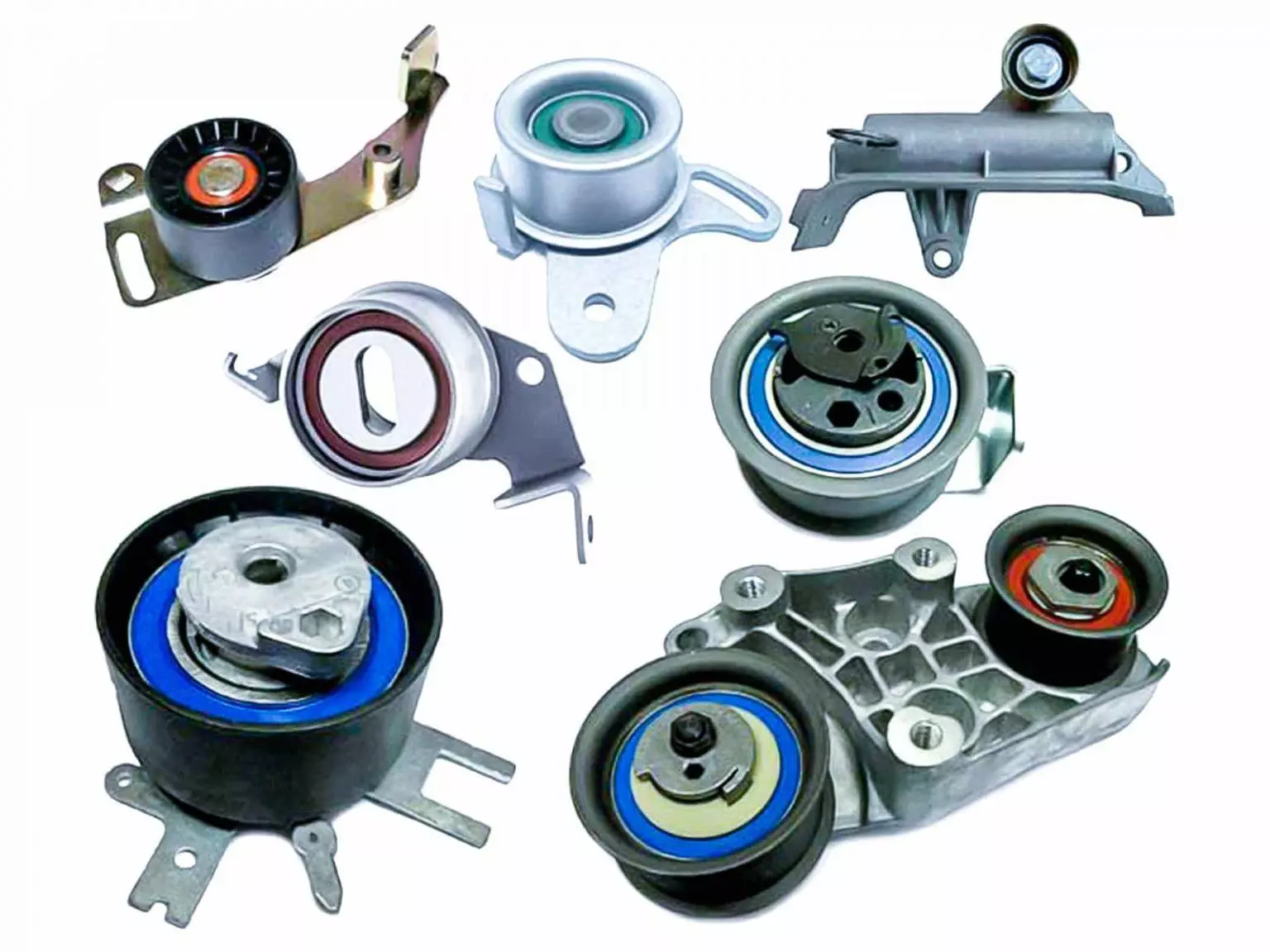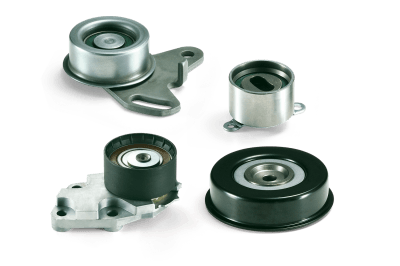
Can you describe the various mounting options and installations for drive belt tensioners in different vehicle models?
Drive belt tensioners can be mounted in different ways depending on the specific design and layout of the vehicle’s engine and belt system. The mounting options and installations for drive belt tensioners can vary across different vehicle models. Here’s a detailed description of the various mounting options and installations for drive belt tensioners:
- Idler Pulley Mounting:
- Spring-Loaded Arm Mounting:
- Hydraulic or Pneumatic Actuated Mounting:
- Combination Designs:
- Specific Engine Configurations:
In some vehicle models, the drive belt tensioner is mounted as an idler pulley. The tensioner is integrated into the belt routing system and is responsible for maintaining the proper tension of the drive belt. It is typically mounted on a bracket or housing using bolts or other fasteners. The idler pulley tensioner can be a standalone component or combined with other pulleys, such as the alternator pulley or water pump pulley, to form a pulley assembly.
Another common mounting option for drive belt tensioners is a spring-loaded arm design. In this configuration, the tensioner consists of a pivoting arm with a pulley at one end and a spring mechanism at the other end. The tensioner arm is mounted on a bracket or housing using a pivot bolt or pin. The spring applies tension to the belt by pulling the arm in the opposite direction, maintaining the desired tension level. The arm may have an adjustment mechanism to fine-tune the tension or compensate for belt wear over time.
In some advanced vehicle models, drive belt tensioners may utilize hydraulic or pneumatic actuation for tension control. These tensioners incorporate a hydraulic or pneumatic cylinder that applies force to the tensioner arm or pulley, adjusting the tension as needed. The tensioner is typically mounted on a bracket or housing using bolts or other fasteners. Hydraulic or pneumatic lines connect the tensioner to a control system that regulates the tension based on inputs such as engine load, temperature, or operating conditions.
Some vehicle models may employ combination designs that incorporate multiple tensioner mounting options. For example, a vehicle may have a spring-loaded arm tensioner for the main drive belt and an idler pulley tensioner for an auxiliary belt system. These combination designs allow for efficient belt routing and tension control in complex engine layouts with multiple belt-driven components.
Mounting options and installations for drive belt tensioners can also vary based on specific engine configurations. For example, in transverse-mounted engines commonly found in front-wheel-drive vehicles, the tensioner may be mounted on the side of the engine block or the front of the cylinder head. In longitudinally-mounted engines, the tensioner may be mounted on the side of the engine block, the front of the timing cover, or other locations depending on the design and layout of the engine.
It’s important to note that the specific mounting options and installations for drive belt tensioners can vary significantly between different vehicle models, engine configurations, and even model years. Therefore, it is essential to refer to the vehicle manufacturer’s specifications, technical documentation, or service manuals for precise information on the mounting options and installation procedures applicable to a particular vehicle model.

What is the impact of proper tensioning on the lifespan and reliability of drive belts in automotive settings?
In automotive settings, proper tensioning plays a crucial role in the lifespan and reliability of drive belts. Maintaining the correct tension ensures optimal performance, reduces wear and stress on the belt and associated components, and prevents premature failure. Here’s a detailed explanation of the impact of proper tensioning on the lifespan and reliability of drive belts:
- Preventing Slippage:
- Reducing Wear and Fatigue:
- Prolonging Component Life:
- Optimizing Belt Performance:
- Minimizing Maintenance and Downtime:
Proper tensioning helps prevent belt slippage. If a drive belt is under-tensioned, it may slip on the pulleys, leading to reduced power transmission efficiency and potential damage. Slippage can cause the belt to generate heat, resulting in accelerated wear, glazing, and decreased belt lifespan. By maintaining the correct tension, the belt remains securely in contact with the pulleys, ensuring efficient power transfer and preventing slippage-related issues.
Correct tensioning reduces wear and fatigue on the drive belt. If a belt is over-tensioned, excessive force is applied to the belt and associated components, increasing the risk of premature wear. Over time, this can lead to belt cracking, fraying, or even snapping. Conversely, under-tensioning can result in excessive belt movement, causing rubbing, vibration, and accelerated wear. Proper tensioning ensures that the belt operates within its designed limits, minimizing wear and fatigue and extending the belt’s lifespan.
Proper tensioning not only benefits the drive belt but also prolongs the life of other components in the belt system. When a belt is correctly tensioned, it reduces stress on pulleys, bearings, and other driven components. Components like the alternator, power steering pump, air conditioning compressor, and water pump operate more efficiently and experience less strain. By maintaining the correct tension, the workload on these components is reduced, leading to increased reliability and longevity.
The correct tensioning of drive belts optimizes their performance. When a belt is properly tensioned, it maintains the proper grip on the pulleys, ensuring efficient power transfer. This allows the driven components to operate at their intended speed and capacity, contributing to overall vehicle performance. Proper tensioning helps prevent belt-related issues such as noise, vibration, and inadequate power delivery. By optimizing belt performance, proper tensioning enhances the reliability and functionality of the automotive system.
By maintaining proper tension, the need for frequent belt adjustments, replacements, and associated maintenance is minimized. A correctly tensioned belt experiences less wear and requires fewer adjustments. This reduces the frequency of belt-related maintenance tasks and lowers the risk of unexpected belt failures or system malfunctions. Proper tensioning helps minimize downtime, improves overall vehicle reliability, and reduces maintenance costs.
In summary, proper tensioning significantly impacts the lifespan and reliability of drive belts in automotive settings. It prevents slippage, reduces wear and fatigue, prolongs the life of associated components, optimizes belt performance, and minimizes maintenance and downtime. Adhering to manufacturer-recommended tensioning specifications and conducting regular inspections and adjustments contribute to the longevity and trouble-free operation of drive belts in automotive applications.

Can you explain the importance of proper tensioning for drive belts in cars and trucks?
Proper tensioning for drive belts in cars and trucks is of utmost importance for the efficient and reliable operation of the vehicles. Maintaining the correct tension in the drive belts ensures optimal power transfer, prevents slippage, reduces wear and noise, and contributes to the overall performance and longevity of the vehicles. Here’s a detailed explanation of the importance of proper tensioning for drive belts:
- Efficient Power Transfer:
- Prevention of Belt Slippage:
- Reduced Wear and Noise:
- Optimal Performance and Reliability:
- Safety Considerations:
Proper tensioning of drive belts allows for efficient power transfer from the engine to various components such as the alternator, power steering pump, air conditioning compressor, and water pump. When the belts are properly tensioned, they maintain a positive grip on the pulleys, ensuring maximum frictional contact. This efficient power transfer minimizes energy losses and optimizes the performance of the vehicle’s systems, resulting in improved overall efficiency and performance.
Drive belt slippage can occur when the belts are either too loose or too tight. Loose belts can slip on the pulleys, resulting in reduced power transmission and impaired operation of the vehicle’s accessories. On the other hand, excessively tight belts can cause excessive strain on the components and lead to premature wear. Proper tensioning ensures that the belts remain securely engaged with the pulleys, preventing slippage and maintaining effective power transfer.
Correct tensioning helps reduce wear on the drive belts and associated components. When the belts are properly tensioned, they experience minimal movement and vibration, resulting in reduced friction and wear. This extends the lifespan of the belts and reduces the frequency of belt replacements. Additionally, proper tensioning helps dampen belt vibrations, resulting in reduced noise levels. This contributes to a quieter and more comfortable driving experience.
Proper tensioning of drive belts is crucial for achieving optimal performance and reliability in cars and trucks. When the belts are tensioned correctly, the vehicle’s systems and components receive the necessary power to operate efficiently. This includes components such as the alternator, which charges the battery and powers the electrical system, and the power steering pump, which assists in steering. By maintaining the correct tension in the drive belts, the vehicles can operate reliably, ensuring smooth operation, minimizing the risk of component failures, and reducing the likelihood of unexpected breakdowns.
Proper tensioning of drive belts also has safety implications. For example, the water pump is driven by a belt and plays a critical role in cooling the engine. If the belt is not properly tensioned and slips or breaks, it can result in engine overheating, potentially leading to engine damage and safety hazards. Similarly, the power steering system relies on the drive belt to operate properly. Insufficient tension can cause power steering failure, making it more difficult to steer the vehicle, especially at low speeds or during maneuvers. Proper tensioning helps ensure the safe and reliable operation of these critical components.
In summary, proper tensioning for drive belts in cars and trucks is crucial for efficient power transfer, prevention of belt slippage, reduction of wear and noise, optimal performance and reliability, and safety considerations. By maintaining the correct tension in the drive belts, vehicles can operate smoothly, maximize power transfer efficiency, minimize wear on components, and ensure the safe and reliable operation of critical systems. Regular inspection and adjustment of belt tension are essential maintenance practices to ensure the longevity and performance of the vehicles.


editor by CX 2024-05-08